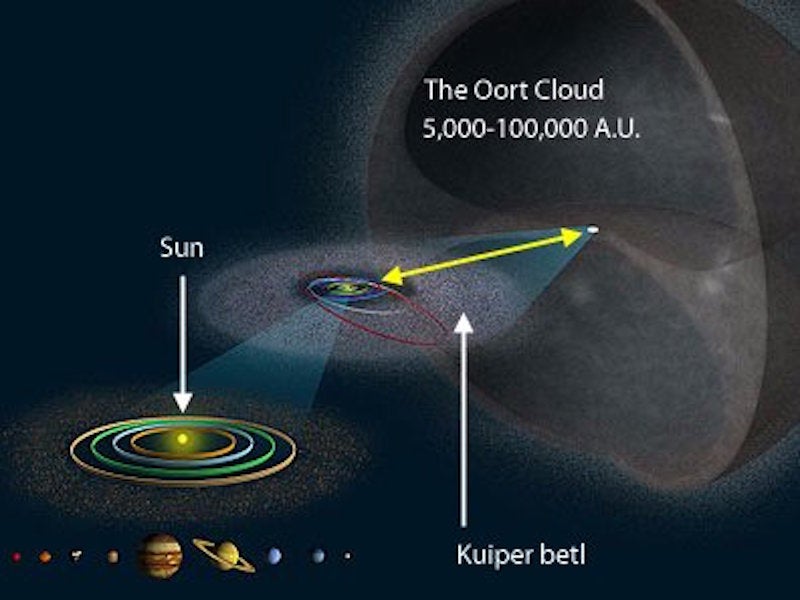A star is hurtling towards our solar system and could knock millions of asteroids straight towards Earth

Your support helps us to tell the story
From reproductive rights to climate change to Big Tech, The Independent is on the ground when the story is developing. Whether it's investigating the financials of Elon Musk's pro-Trump PAC or producing our latest documentary, 'The A Word', which shines a light on the American women fighting for reproductive rights, we know how important it is to parse out the facts from the messaging.
At such a critical moment in US history, we need reporters on the ground. Your donation allows us to keep sending journalists to speak to both sides of the story.
The Independent is trusted by Americans across the entire political spectrum. And unlike many other quality news outlets, we choose not to lock Americans out of our reporting and analysis with paywalls. We believe quality journalism should be available to everyone, paid for by those who can afford it.
Your support makes all the difference.Researchers have known for a while that a star called Gliese 710 is headed straight for our solar system, but they've now worked out precisely when it should arrive.
The star is currently hurtling through space at about 32,000 mph, and is around 64 lightyears away. (One lightyear is around 5,878,000,000,000 miles.)
Gliese 710 is about half the size of our sun, and it is set to reach Earth in 1.35 million years, according to a paper published in the journal Astronomy & Astrophysics in November.
And when it arrives, the star could end up a mere 77 light-days away from Earth — one light-day being the equivalent of how far light travels in one day, which is about 26 billion kilometers, the researchers worked out.
As far as we know, Gliese 710 isn't set to collide directly with Earth, but it wil be passing through the Oort Cloud, a shell of trillions of icy objects at the furthest reaches of our solar system.
So although 77 light-days sounds like a relatively safe distance, the speeding star could burst through the cloud and shoot these icy objects and comets all around our solar system. Any one of these is pretty likely to collide with Earth.

"Gliese 710 will trigger an observable cometary shower with a mean density of approximately ten comets per year, lasting for three to 4 million years," wrote the authors.
The team, who hails from Adam Mickiewicz University in Poland, used measurements from the European Space Agency's Gaia space observatory.
This new observatory is constructing the largest and most precise 3D space catalog ever made, totalling approximately 1 billion astronomical objects, which means the data are ten times more accurate than previous predictions.
There's still an error rate of around 50% though, which means Gliese 710 could actually scrape past at a mere 40 light-days away.
Some scientists speculate that a similar event of a star passing through the Oort cloud triggered the asteroid that wiped out the dinosaurs around 65 million years ago.
However, the Gliese 710 event could make the dinosaur extinction look relatively minor. At its closest distance, it will be the brightest and fastest observable object in the sky, and as the authors say in the paper, it will be the "strongest disrupting encounter in the future and history of the solar system."
But it's also not the only galactic body to worry about. There are as many as 14 other stars that could come within a 3 light-year distance to us any time over the next few million years.
• The 13 best restaurants in London to try in 2017
• 27 things you didn't know your iPhone could do
• 21 bars with the world's most incredible views
Read the original article on Business Insider UK. © 2016. Follow Business Insider UK on Twitter.
Join our commenting forum
Join thought-provoking conversations, follow other Independent readers and see their replies
Comments